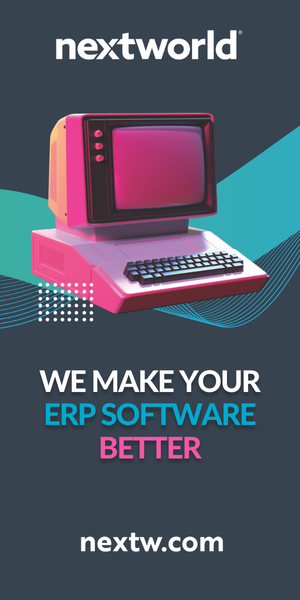2022 and 2023 were important years for Blue Diamond Growers, one of the largest exporters of almond and almond-based products in the USA. As supply chains worldwide normalized in late 2022 after the shipping crisis during the pandemic, ocean rates reverted to pre-pandemic levels making exports a priority for the almond supplier. For Blue Diamond, the two years also marked the beginning of their digital transformation journey with SAP software.
In late 2022, Blue Diamond improved its processes by implementing SAP Transportation Management (TM) systems for global transportation. Although the issue of getting available containers was resolved with SAP TM, the company continued to incur a high cost of transportation as vendors would give their estimated costs and Blue Diamond would accrue them until containers became available, due to a lack of a proper forecasting and accrual system.
But that changed in 2023, when the company upgraded its integrated planning with the SAP Integrated Business Planning (IBP) system.
The four pillars of technology
“Like most companies, our ocean freight supply chain suffered immensely during the pandemic and that was our primary driver to embed SAP TM on our SAP S4 system,” says Steven Birgfield, Vice President, Information Technology and Services at Blue Diamond Growers. “After that it was only a matter of leveraging the Business Network for logistics in
this integration.”
It helped that around 80% of Blue Diamond’s carriers were already in the Business Network making the update to SAP IBP easier for the company. Blue Diamond went live with these integrations for its export market in late 2022 and by July 2023, they went live for their domestic logistics.
These updates helped the company with better visibility planning and making sure they got a carrier on time.
According to Birgfield, a faster turnaround time for the company’s customer service team was also achieved due to the integration, as they now only had to refer to one system to get all the answers instead of different ones, leading to better accruals, flexibility, and supply chain resilience.
“We also have better insights into the information going into the system. If there is a discrepancy we get alerted immediately, so that helps us understand the issue swiftly and work with the carrier accordingly,” he explains.
Birgfield gives an example of a typical order that the integrated system generates today. “Suppose we have a shipment that is ready to be sent out. The system will provide us answers like who will be able to ship overseas or deliver domestically, which carrier has the best rate and best timing so that we can pick that carrier accordingly. The system provides these answers along with an estimated delivery date.”
Additionally, there’s Project 44, a visibility extension that works with SAP IBP, SAP TM, and SAP Business Logistics Network (BLN). “Project 44 is an SAP partner that captures data from hundreds of thousands of carriers in almost real time,” says Birgfield, adding that this system also uses a degree of artificial intelligence (AI). “For example, it will let you know that though the carrier might be predicting a Thursday delivery, there’s a risk of the delivery being delayed to Saturday,” he says.
A lesson in integration
The biggest change from this integration was felt by Blue Diamond’s logistics team, though it took some time to adjust from the manual processing they were using. The key was trusting the data. Birgfield notes, “Change management and data management were a big part of our learning.”
“In 2022-2023, when we were implementing these systems, the data being sent back to our team was not complete as carriers were not giving them accurate or timely information. So, we had to work with SAP and Project 44 to let them know we were seeing gaps in their data and checking on what we could do to close that gap,” he says.
Understanding the process flow after the integration was also a challenge. “We sometimes sent the wrong code to the system resulting in gaps for data and time accuracy,” he says, adding that training, especially for the company’s logistics representatives, made a big difference in overcoming these issues. Additionally, the company ensured that the right elements or data were input into the standard integrations between the four systems to reduce these gaps, by communicating more with the carriers.
It helped that Blue Diamond had strong partners in SAP and Project 44, who helped the team get trained on the integrated system and tweak the process to make it work more accurately for them. It was also about encouraging the team to embrace the system through reports and case studies that showed the system would make their lives easier. The continuous learning process also gave better insights to Blue Diamond’s technology partners on what the company needed.
Next steps
Today, the four systems, which have an on-premises license running in a hyperscale environment and hosted on Google Cloud, are running seamlessly.
The company is now evaluating an upgrade to RISE with SAP. Birgfield believes that this is a natural progression in his team’s quest to ensure they have a seamless logistics and supply chain network.
“The question is not if we upgrade to RISE but when we do it, especially since sustainability and AI are the way forward. Both these features are available on RISE Private Cloud.”
With the logistics part of the company’s digital transformation sorted, Birgfield and his team now aim for a digital transformation of the company’s production and plant maintenance processes.
“We have a basic third-party maintenance system now, but we want to implement a new system from the SAP ecosystem such as production planning and detailed scheduling (PPDS). We see it really closing the whole extended planning and analytics capability gap,” he says.
He is also planning for some updates on the visibility aspect of shipments. “Project 44 has got some additional capabilities like a world map or dashboard to show exactly where the cargo is and that is an interesting addition to the system,” Birgfield says.
The team is also focusing on continuous optimization to build flexibility and resiliency in their supply chain. Giving the example of the Baltimore Harbor accident in 2024, Birgfield says, “The incident did not impact us directly, but it was an event that could not be predicted. It led us to look for alternatives like trucking and rail to ensure we did not fall back on our delivery schedules.”
Blue Diamond, like many other companies, is also focusing keenly on its environment, sustainability and governance (ESG) metrics and has upgraded to the 2023 version of SAP S4, which has sustainability metrics built into it. “We can now get metrics like carbon footprint from our freight shipments through this upgrade,” Birgfield notes, “We want to leverage that aspect and make sure we are lowering our carbon footprint.”
Blue Diamond is a California-based company and the state’s recent strict ESG mandates have made the company even more focused on ensuring that they remain a responsible almond grower and supplier. “We want to plan our logistics just-so, to save gasoline, resulting not only in lower costs but reduced environmental impact as well,” Birgfield says.
To ensure these projects meet the company’s needs, Blue Diamond is investing in upskilling its SAP talent. “We want to further strengthen our backend, see how we can leverage low code/no code and get away from the standard work,” says Birgfield. He adds that to achieve this the company is strengthening its data and analytics team to come up with better ways to model and shape their AI initiatives. “It eliminates the need for heavy-duty data scientists but boosts the need for AI experts,” he says.
Betting on AI
Beyond 2025, Birgfield hopes to have a complete ERP or Analytics suite in place at Blue Diamond. “We are focusing on the data and analytics part and also trying to figure out the true business value of using AI and going beyond using features like Copilot or Chat GPT.”
He believes that it is only a matter of time before a solid business case can be made for AI. “We are already seeing its impact in areas like marketing, where the team has realized six-figure savings by using AI in their operations,” he says, adding that his own team is experimenting with the technology and has developed a chatbot for the IT Helpdesk in the company to reduce the load on the team.
His team has also developed an AI tool for the services unit called Sprinkler, which takes customer calls and helps service agents gauge customer mood during and at the end of the call to help them provide better service and answers.
Blue Diamond is now experimenting with AI to help with crop forecasting and taste trends. For the former, it seeks to layer aspects like weather patterns to predict the crop yield going forward, while for the latter it is working with a vendor to see if AI can predict taste trends and project the next cool flavor for almonds or even new product simulations to see if consumers will like it or not.
Still, Birgfield believes that they are just getting started on AI. “There are many opportunities, but we need to figure out how best to use those, how we can take advantage of Gen AI. Although it seems like a light lift, we must consider a lot of aspects like data and governance before we build a clear path to using the power of AI,” he concludes.
What this means for ERP insiders…
In the ever-evolving landscape of supply chain management, Blue Diamond Growers—a leading almond producer and exporter—has emerged as a shining example of how modern ERP systems can transform logistics and operations. Between 2022 and 2023, the company embarked on a digital transformation journey, tackling challenges ranging from container shortages to sustainability metrics. For ERP professionals, their story offers valuable insights into leveraging technology for resilience, efficiency, and innovation.
Strategic Integration of ERP Systems Enhances Supply Chain Efficiency. Blue Diamond integrated SAP Transportation Management (TM) with SAP Integrated Business Planning (IBP) to streamline its global logistics. These systems, coupled with tools like SAP Business Logistics Network and Project 44, allowed the company to automate carrier selection, improve visibility, and forecast transportation costs. The result was a unified platform that reduced manual errors, accelerated service timelines, and enhanced accrual accuracy.
Data Management and Change Adoption are Crucial for Success. Implementing new systems revealed challenges in data accuracy and team adaptation. Blue Diamond tackled these issues by collaborating with partners like SAP and Project 44, improving data flow, and upskilling its logistics team. Comprehensive training and a focus on change management were pivotal in building trust in the system and ensuring seamless operations.
Leveraging AI for Sustainability and Innovation. Blue Diamond is exploring AI-powered tools for crop forecasting, taste trend prediction, and customer service optimization. By integrating AI with its ERP ecosystem, the company not only enhances operational capabilities but also aligns with ESG (environmental, social, and governance) goals. For instance, the updated SAP S4 system helps track carbon footprints, enabling more sustainable logistics planning.
Blue Diamond Growers’ journey underscores the transformative potential of ERP systems in navigating supply chain complexities, driving innovation, and meeting sustainability goals. ERP professionals can draw from their example to optimize systems, prioritize change management, and embrace emerging technologies like AI.






